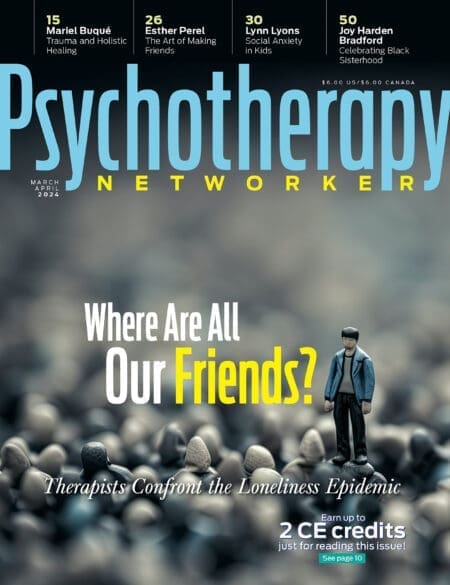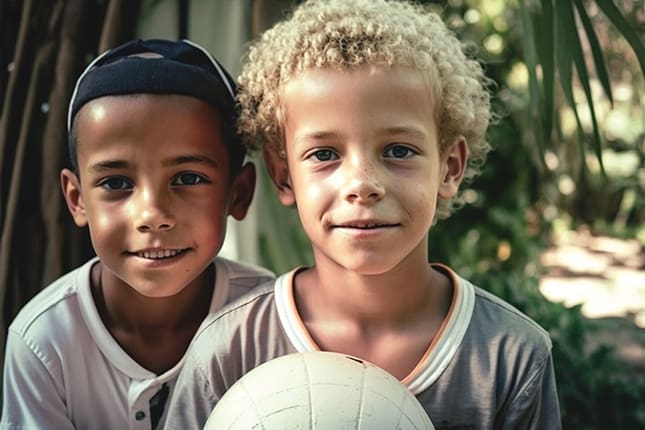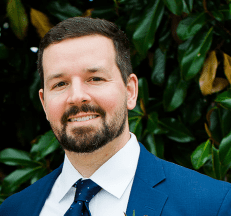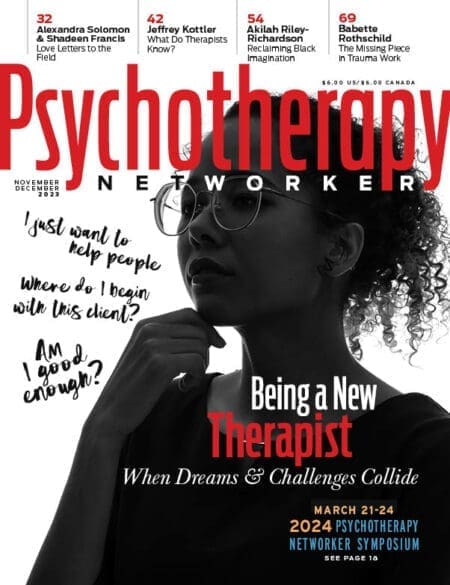It’s almost noon on Tuesday, and Niobe Way still hasn’t made her bed. “Please excuse the mess,” she says, hurriedly taking a seat behind her laptop and gesturing to the crumpled sheets behind her as our Zoom call kicks off.
I can’t blame her for the messy background. She’s been busy tending to a particularly stubborn problem. More than stubborn, really. This problem is not only pervasive, it’s entrenched—part of the fabric of American society. And even though lives are at stake, most of us will encounter some version of it daily and shrug it off—and that’s assuming we aren’t part of the problem ourselves. So, understandably, Niobe Way isn’t just busy today, or this week, or this month. She’s been busy for the last 36 years.
In 1987, Way was working as a counselor in an urban public school. With the shaky confidence of a newly minted mental health professional, she began to realize something startling: much of what she’d been taught about adolescent boys’ mental health, psychological development, and emotional capacities was wrong. Talking with them and watching them interact with their peers, teachers, and parents, she saw that their days weren’t just filled with juvenile crassness, hooliganism, and roughhousing. They were filled with moments of heartfelt connection, longing, reflection, and love—especially in the context of their friendships with other boys. These boys weren’t just bucking stereotypes. They were shattering them.
But as the boys began to enter their teenage years, Way noticed an alarming trend. Many of them shed their male friendships and grew cold, hardened, sad, lonely, and defensive, only revealing their hurt and longing behind closed doors, if at all. Gradually, they’d come to embody the stereotypes they’d so robustly contradicted in their earlier years.
Too many of us turn a blind eye to this problem, Way says—and have been doing so for a long time. Left unattended, a sad boy becomes a depressed man. An angry boy becomes a toxic partner. Is it any wonder that rates of loneliness, suicide, and violence have not only been steadily increasing, but have long remained a particularly male problem?
Not only sounding the alarm, but taking aim at the structures and stereotypes that keep boys trapped in thinking and behavior that hurts us all, Way has spent more than three decades looking for solutions. After receiving her doctorate from Harvard University in human development and psychology, she’s gone on to author more than a hundred academic journal publications, give a TED Talk on the myth of “boys will be boys,” and cocreate The Listening Project, which seeks to foster connection between students across New York middle schools. Among her books are The Crisis of Connection: Roots, Consequences, and Solutions and Deep Secrets: Boys’ Friendships and the Crisis of Connection. The latter inspired Close, a coming-of-age movie that was nominated for a 2022 Academy Award for Best International Feature Film. Today, Way is professor of developmental psychology at NYU who’s been featured in The New York Times, The New Yorker, and The Washington Post, as well as on The Today Show, The Daily Show, NPR, and NBC.
Unmade beds be damned, Niobe Way has been busy. Very busy.
In the interview that follows, Way unpacks her research, shares her thoughts on why we’ve been getting boys—and love—all wrong, and makes a case for cautious optimism.

Chris Lyford: How did you become interested in challenging the cultural messaging around boys’ friendships?
Niobe Way: In the late 1980s, I was a doctoral student at Harvard’s school of education, getting my doctorate in human development and psychology. As part of my training, I was working with high school students as an intern. I became fascinated by how often the boys I met with talked about their friendships. They wanted to process them, to talk about the betrayals, the hurt, the loneliness, and their desire for friendship. I was stunned. I’d expected they’d talk about girlfriends, teachers, or parents, but all they were talking about was friendship.
Meanwhile, we weren’t talking about friendships at all in my graduate classes. There was a mismatch between what I heard in my classes and what I was hearing from the boys themselves. And I soon realized not only was friendship relevant to these boys, but it had been relevant to my two younger brothers. I’d repressed memories of them struggling to find friendships and being rejected by other boys, and the hurt around that. I thought, Oh my god, nobody is telling this story! By the time I became a professor at NYU in 1995, I’d received a grant to study friendships in urban public schools from the William T. Grant Foundation. I was particularly interested in bringing the voices of working-class kids into our conversation, because up to that point, studies of human development had almost exclusively been on upper-middle-class, white kids.
For these studies, my team and I followed hundreds of boys between ages 12 and 19, and we found that they were telling a clear story about their friendships. They’d start off having or wanting close friendships and using language about love and connection. They’d say things like, “I don’t know what I would do without him,” or “I love him,” or “I want a friend I can share secrets with, be vulnerable with”—very emotional, very beautiful language. But as they got older, you’d hear more stereotypical language replace it: “It doesn’t matter,” or “I don’t care,” or “I don’t have time for friends.” You’d hear the sadness in their voices. I realized that boys were experiencing a crisis of connection, sacrificing their friendships in the name of protecting the self and supporting their “manhood,” because they thought it looked “girly” or “gay” to continue to want such intimacy with men.
If anyone tells you this is old-fashioned, that boys aren’t like this anymore, they’re wrong. This still happens. It’s as relevant now as it was 20 years ago. Men are lonely, frustrated, and very cautious about sharing vulnerable emotions with their male friends.
CL: When you were in graduate school, this was a relatively unexplored area. What was it like studying boys’ friendships without much of a research base?
Way: Truthfully, I still feel alone in this work. I’ve always been outraged by our inability to listen to young people. They’re telling us such an important story about how growing up can be bad for our health. They’re saying, “What is wrong with you people? You’re asking us to sacrifice our friendships in the name of academic achievement, monetary success, and marriage. These friendships are the essential relationships in our lives, and you don’t value them as fundamental human needs.”
I find it outrageous that our society thinks social-emotional capacities and needs differ based on gender, that we continue to think girls are inherently softer than boys and that boys are inherently harder than girls. It’s insane that thinking is seen as masculine and feeling as feminine. Young people have been pointing this out for almost a century, and we haven’t been listening.
In my work, I’ve developed a method for gathering data that allows us to really listen to them. In addition to the survey-based methods and observations, my team and I use an interview method based on the work of Lyn Mikel Brown and Carol Gilligan. We call it listening with curiosity: we ask contrast questions, follow-up questions, and open-ended questions. These are practices that allow people to feel heard and seen. And even though it’s a skill we’re all born with, we just don’t do it enough. That’s why so much interviewing data is junk—because researchers aren’t really engaging the people they speak with.
Ours is a method of listening that allows us to hear what people really think, not just what they think they’re supposed to think. It inspired The Listening Project, which started in 2017. Essentially, we teach boys to ask good questions, and what they come up with is mind-blowing. When we began, I had the boys interview me. I was in a room filled with 24 12-year-old boys at a school in the Lower East Side. I told them they could ask me anything they wanted, and if I didn’t want to answer I could say so.
The first question they asked me was “Are you married?” I said no. I was trying to be difficult with this one-word answer, because I wanted them to use their skills. So then they asked, “Have you been married?” I said yes, and they started laughing because they understood what I was doing with my answers. The relational intelligence it took to get my responses was genius. Most people would’ve stopped after one no. Then came their next questions: “Do you still love your ex-husband?” “Does he know?” “How does he know?” “Do your children know?” They were listening with so much intensity, you could’ve heard a pin drop. They wanted to hear the answers.
CL: I love that, because there’s a misconception that boys and young men don’t have the capacity to be emotionally literate.
Way: Exactly. They are such deep thinkers. I was recently working with a seventh-grade class on Zoom and said, “I want you to tell me the question you carry around with you in your life.” One student wasn’t showing his face or participating much. He had a Transformers cartoon on his computer screen. He was a boy’s boy. So I asked him, “Okay Michael, what’s your question?” and he mumbled something. I said, “I can’t hear you. Can you speak louder?” And he mumbled again. So I said, “I’m sorry, Michael, you’ve got to speak up, I really want to hear what your question is.” Then, he put his mouth very close to the microphone and said, “I want to know where you feel safe!” I was blown away. That’s where 12-year-old boys’ heads are. They aren’t asking questions like “Why are you a teacher?” They’re asking their mothers things like, “Mommy, why do you smile when you’re feeling sad?” Basically, why are you faking an emotion? Or “Mommy, are you yelling at me because your mommy yelled at you?” Intergenerational violence—a five-year-old boy asked about that. That capacity for deep emotional intelligence in boys is a human capacity. And our society squashes it.
The Listening Project is a 26-lesson unit that is integrated in middle and high school classes, like English, during any one semester. We’re currently working in schools across New York City. We have students do four interviews with people they know and don’t know, in and outside of school. The students give feedback to each other and supervise each other along the way, and by the end of the program they write a biography and present it to the school on the people they interviewed. You have entire communities coming to the school to listen to the children read these biographies. By the end, everybody’s crying, and the whole school feels like a totally connected unit.
CL: What’s it like for you to witness this?
Way: I remember the first time I heard the boys reading their biographies. They were so effing gorgeous, so emotionally intelligent and observant and beautifully written, like poetry. In that moment, all I wanted to do was run out into the street and scream at everybody that the very boys they’d stereotyped and underestimated the most—preteen boys, boys of color, boys from working-class communities—are so effing amazing.
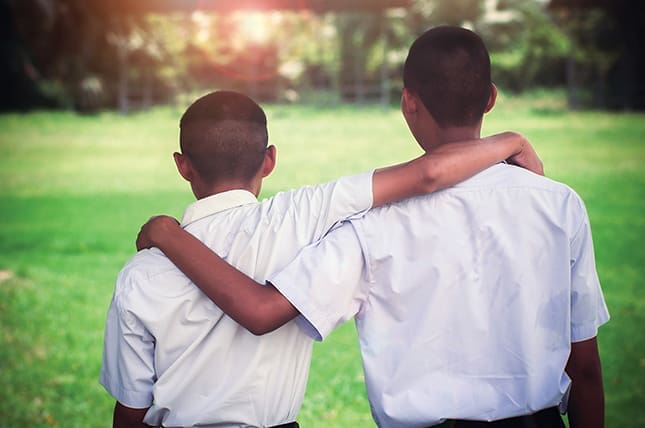
Our stories about these boys being unintelligent are literally killing them—and killing girls and women, too. Suicide, homicide. I think we’re all to blame: parents, teachers, employers, institutions. I just want to say to the entire culture: stop it. We’d have a healthy, thriving society if we understood and nurtured the fact that we’re all born intelligent—relationally, socially, emotionally, and cognitively.
I’ve heard boys say, “It’d be nice to be a girl because then I wouldn’t have to be emotionless.” That’s the kind of society we live in. We’re in a crisis of connection, with ourselves and with each other. We’re disconnected from our own humanity as we try to emphasize our hard sides, not our soft and poetic ones. According to a Harvard study, 80 percent of parents value academic achievement over kindness. What kind of society is that? So I’m angry about it. Think of how wonderful it would be if our dinnertime conversations were around the true questions in kids’ lives: “Well, I smile because I don’t want you to feel sad, honey. Do you ever fake an emotion?” Or, “You know what, I do think I yell at you because my mommy yelled at me. I do think I express anger through yelling instead of through telling you why I’m upset. Do you ever feel like yelling?” I’m hopeful that we can start to nurture the natural, curious, beautiful intelligence we have to ask questions and listen to why people do the things they do. If more people did, we wouldn’t be suffering so much, and our institutions would be healthier.
CL: Let’s talk about the importance of love in boys’ friendships. It’s a word you use often.
Way: We know from attachment theory and developmental psychology that love is an important part of the human experience. We’re not just talking about the love of a parent; it’s love for your peers. The data suggest that the desire for love from a multitude of people is necessary for human thriving. We want to be close to all sorts of people: our peers, people of the same sex and the opposite sex.
So the question for me is what happens when we’re born wanting love in all sorts of forms and people and ages and places, but we grow up thinking we must want love from only one person, from a romantic partner? What happens to us? What dissociation is necessary for us to arrive at that thinking? And for us to think that if we never find that one person, then we’ve never had true love? We use so much garbage language around so-called “true love” and “the one and only.” We’re putting all our emotional eggs in one basket. The fact that we somehow think that romantic love is more important than platonic love or friendship love is a product of our dissociation, a product of our disconnection from ourselves.
CL: This idea of love between young boys features prominently in the film Close, which was inspired by your book, Deep Secrets. Do any key scenes stand out to you?
Way: So many. Watching it was deeply emotional for me. I believe in my data, and I get emails from boys and men from around the world who tell me I’m telling their story. So I knew the story of Deep Secrets was real. But I didn’t get that it was really real until I saw how someone had made it not only into a movie, but a mind-blowingly beautiful movie at that.
Here’s what I noticed: I tell the story in words. The director, Lukas Dhont, tells it in physicality. The movie doesn’t show the gorgeous language that boys use, their discussions of love, but it does show the physicality of love: the touching, the hugging, the snuggling. That’s what I don’t have in my book, and all that physicality is a part of the love experience.
There’s a scene where Remy is playing the oboe and Leo is listening and tearing up. American audiences watched that scene and initially thought this was a film about gay boys—which reifies my finding in Deep Secrets. In reality, he’s tearing up because of how much he loves his friend. Why does that make him gay? There’s nothing sexual about those tears. That scene is an expression of the physical experience of love. I’ve become friends with the director, who’s gay. He said, “You won’t believe how many American journalists say this is a film about gay boys when it’s really a film about the human desire for closeness.” Are they gay? Are they not gay? It’s irrelevant. American culture has this idea that somehow male-male intimacy is gay. European journalists never thought the boys were gay. They just thought this was a story about boys, about humans.
Another scene is equally compelling, when Leo and Remy fight. They’re play-fighting, and then it turns into a real fight. And then you see Remy feeling a sense of betrayal and Leo feeling a sense of shame, and they vent it onto each other. And that’s part of love, too. There’s intense anger when you feel betrayed, but also when you feel the shame of betraying.
CL: Are boys still in the thick of the “crisis of connection”?
Way: We all are. Suicide rates for older teenagers have gone up 75 percent over the last 10 years. A recent national health report said everybody under the age of 65 should be screened for anxiety. Is it truly worse than it was? Maybe we’re just reporting it more. Maybe we’re more in tune with our depression than we were. It doesn’t matter; we’re in bad shape. We do damage by calling this a mental health crisis. That’s a symptom. Living in a culture that clashes with your nature—a culture that doesn’t nourish the soft side of your humanity—leads to anxiety, depression, loneliness, and suicide. Those problems alone are not the crisis. The crisis is the clash.
Thinking masculinity affects only boys and men is ludicrous. Modernity is premised on norms of masculinity. What we consider soft, feminine things—relationships, community, obligations to parents—we’re told we don’t need in modern society. And we confound masculinity—being autonomous, self-sufficient—with maturity, which is stunning. We don’t call being able to have mutually supportive relationships maturity.
CL: To be clear, this thinking transcends cultures and demographics?
Way: Of course! American homophobic masculinity is everywhere. In the United Arab Emirates, where I teach, men used to touch their noses to each other as a greeting. Now they never do that because it’s considered gay. In China, where I lived for many years, men used to hold hands as friends all the time. They’d never do that now because it’s considered gay. There might be different versions of it in other cultures, but intimacy between men in any form is being sexualized.
CL: What message do you have for therapists reading this, and ideally, how do you envision their role in helping shape the future of boys’ mental health?
Way: They need to see the issues people are struggling with, fundamentally, as a crisis of connection, and help nurture their clients’ relationships. Allow friends to come to therapy sessions. Allow people—not just romantic partners, but all sorts of people your client wants to be close with—to come into sessions and help them work on their connection, regardless of what type of connection it is. Even if it’s someone from work, allow them to come into the therapy space. Therapists already know there’s a disconnection from self, but they should see part of their work as helping people tap into their natural relational skills to build relationships around them.
I also hope they’ll nurture people’s natural curiosity in themselves and in each other. That curiosity is the root of all good connection. We cannot be connected to others if we’re not curious about them. Ask yourself, “How do I bring the nurturing of curiosity into a therapy session?” That would be an interesting conversation to have.
Main Photo @ Wetzkaz
Second Photo @ Arrowsmith2
Chris Lyford
Chris Lyford is the Senior Editor at Psychotherapy Networker. Previously, he was Assistant Director and Editor of the The Atlantic Post, where he wrote and edited news pieces on the Middle East and Africa. He also formerly worked at The Washington Post, where he wrote local feature pieces for the Metro, Sports, and Style sections. Contact: clyford@psychnetworker.org.
